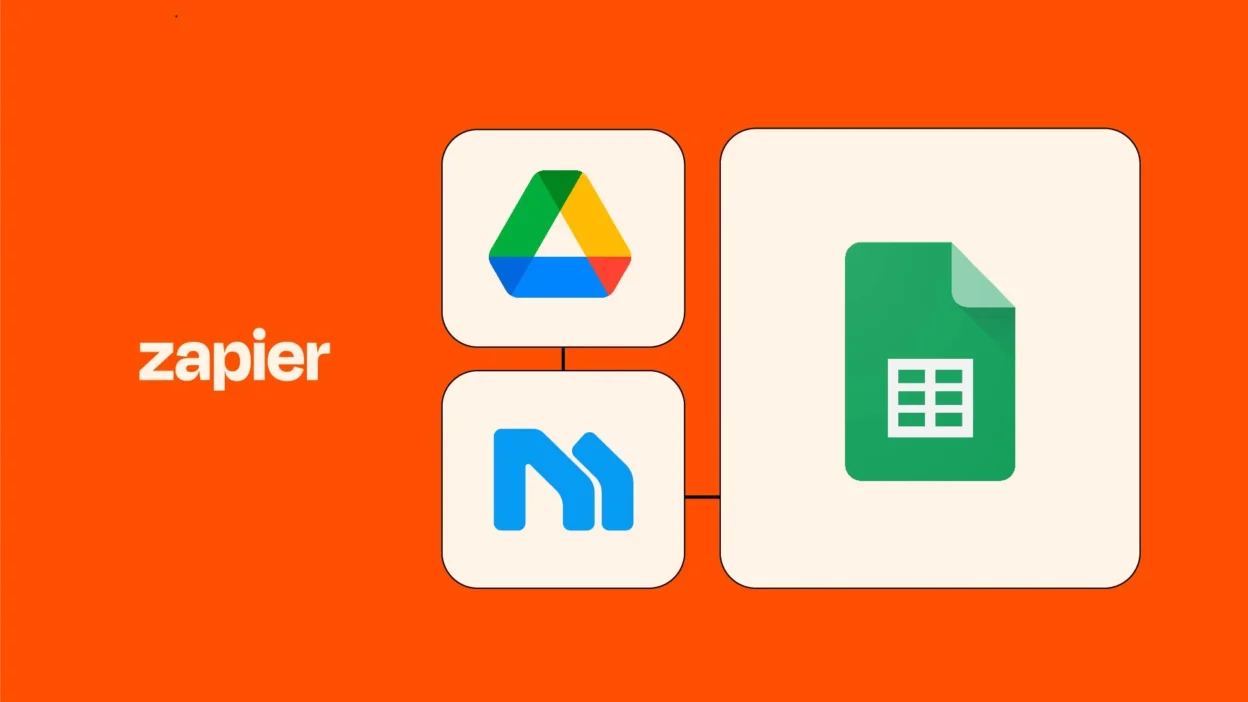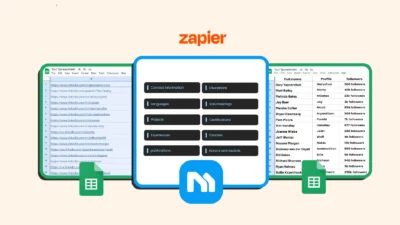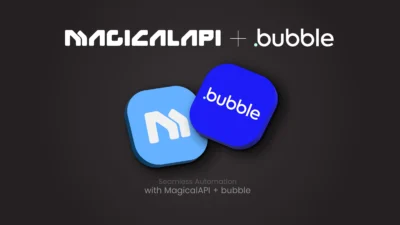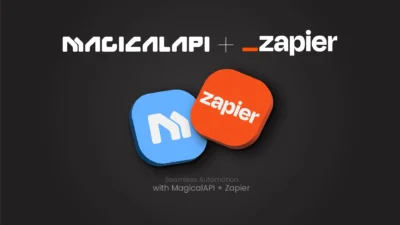Automate Resume Parsing From Google Drive: Resume files are one of the most important factors in the Human Resources field, but dealing with tons of files in different formats and styles, and reading them one by one, can be too hard and slow down the process.
MagicalAPI’s Resume Parser service makes this easier by parsing resume files and providing their content in a structured and clean format, paving the way for ATS checking and reviewing resume files.
In this post, with the power of Zapier integrations and MagicalAPI, we are going to connect Google Drive to the MagicalAPI Resume Parser service to automate the process of reading resume files from a common cloud platform and parsing them into a nice, clean table of data.
As we noted previously, “Zapier is a no-code platform that enables you to connect and integrate a wide range of apps… allowing you to build automation tools without requiring any coding skills.” Building on that, this tutorial dives into automating resume parsing from Google Drive using MagicalAPI’s Zap templates(Parse Resumes from Drive with Zapier).
Table of Contents
Understanding Zap Templates for MagicalAPI Integrations
Zap Templates are ready-made Zapier workflows where the triggers and actions are predefined. They reduce the time required to set up workflows and help users automate their tasks with just a few clicks.
You can explore the list of MagicalAPI’s Zapier integration templates on the integration page:
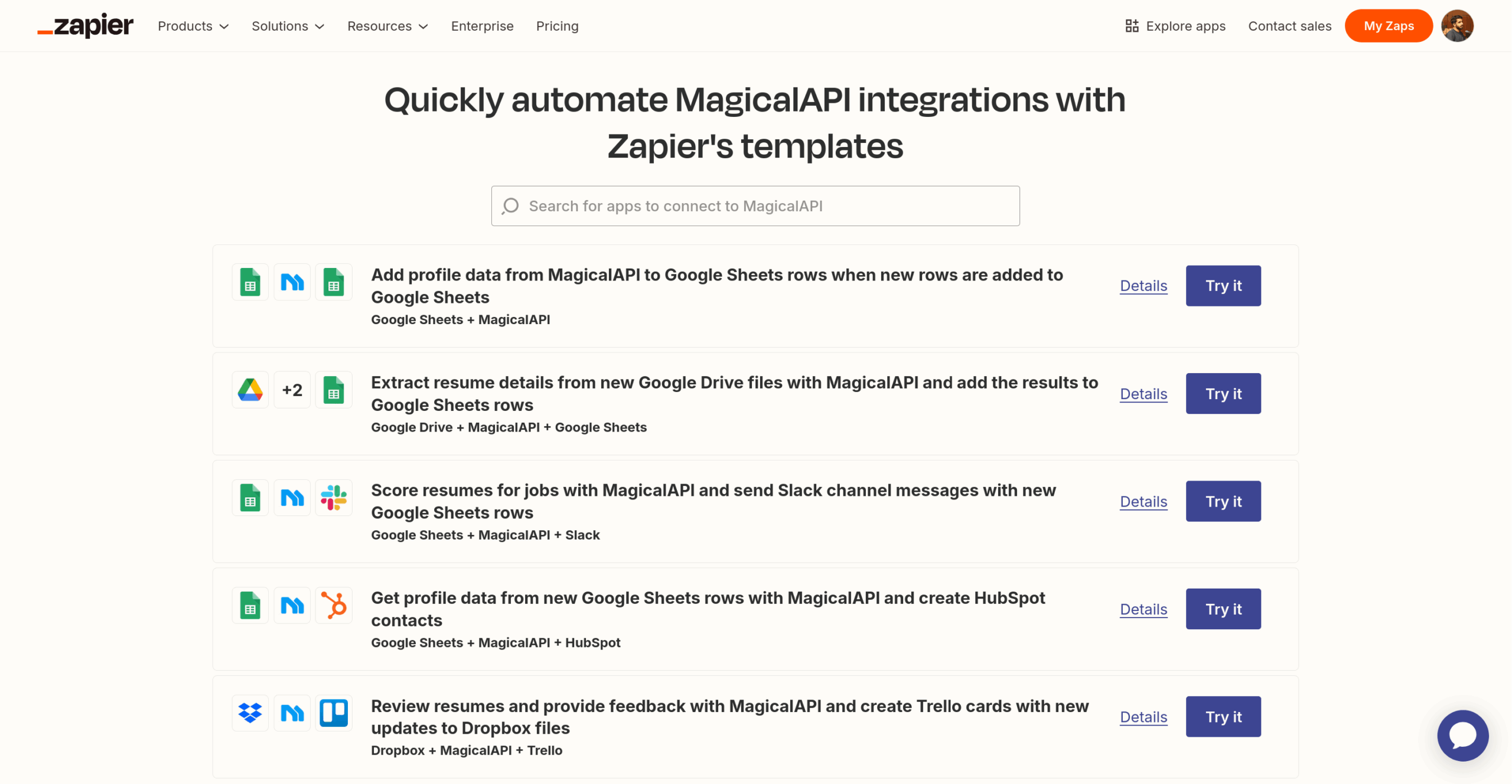
Automating Resume File Parsing from Google Drive
The task we want to automate in this tutorial is parsing resume files (using MagicalAPI’s resume parser service) and writing the extracted data to a Google Sheet whenever a new resume file is added to Google Drive.
How to Set Up Automated Resume Parsing with MagicalAPI and Zapier
In the initial phase of the primary tutorial on integrating MagicalAPI with Zapier, we familiarized ourselves with the requirements for the integration process. I’ll skip over the steps because I’m assuming you already have accounts on both platforms and the “API Key” for your MagicalAPI account.
Step 1: Use the Template to Create a Zap
First, visit MagicalAPI’s integration page on Zapier, scroll down to the templates section, and click the “Try it” button for the template named “Extract resume details from new Google Drive files with MagicalAPI and add the results to Google Sheets rows” (you’ll then be redirected to the Zap editor page):
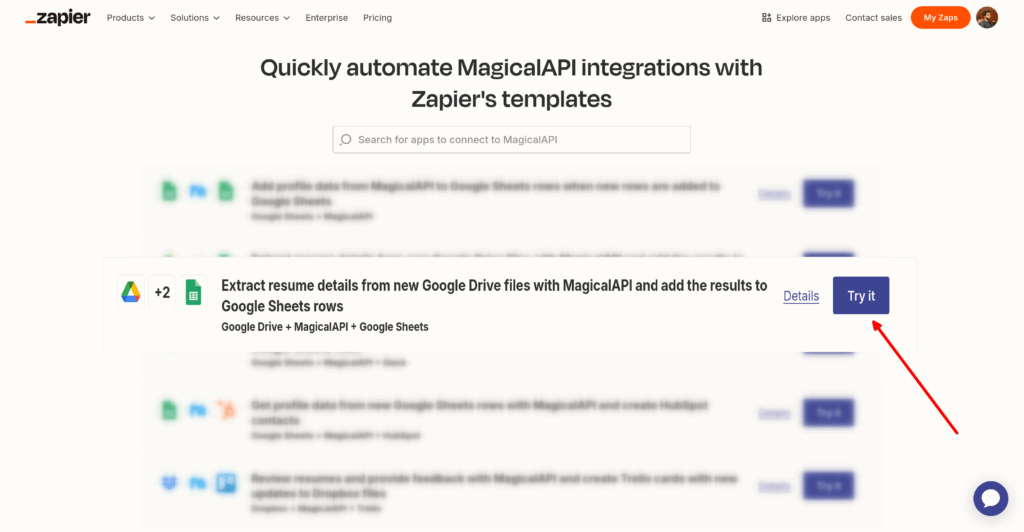
Step 2: Set Up Input Data Parameters in the Zap Editor
You are now in the Zap Editor, the interface where workflows are built. As you can see, the trigger and actions have already been defined; the only thing left is to fill out your custom data.
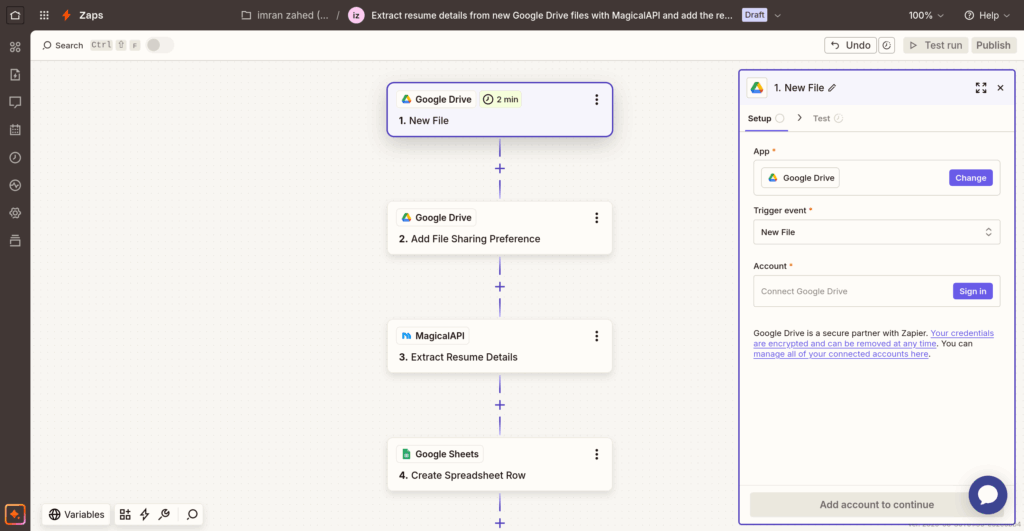
1. Start by connecting your “Google Account” in the first card (the trigger) to allow Zapier to access your Google Drive account. Then, in the “Configure” tab, select your Drive in Google Drive.
In the “Test” tab for the trigger, you can select one of your recently uploaded files in Google Drive (you can upload one now and click “Find new records”) to perform the Zap test with it. Be sure to select a resume file, not another file type.
2. Next, proceed to the “Add File Sharing Preferences” action, where we will share the uploaded file from the previous section publicly. By default, files in Google Drive cannot be accessed publicly, and a direct link is needed for the MagicalAPI resume parser service. Here, you only need to select your “Drive”; the other fields are already configured.
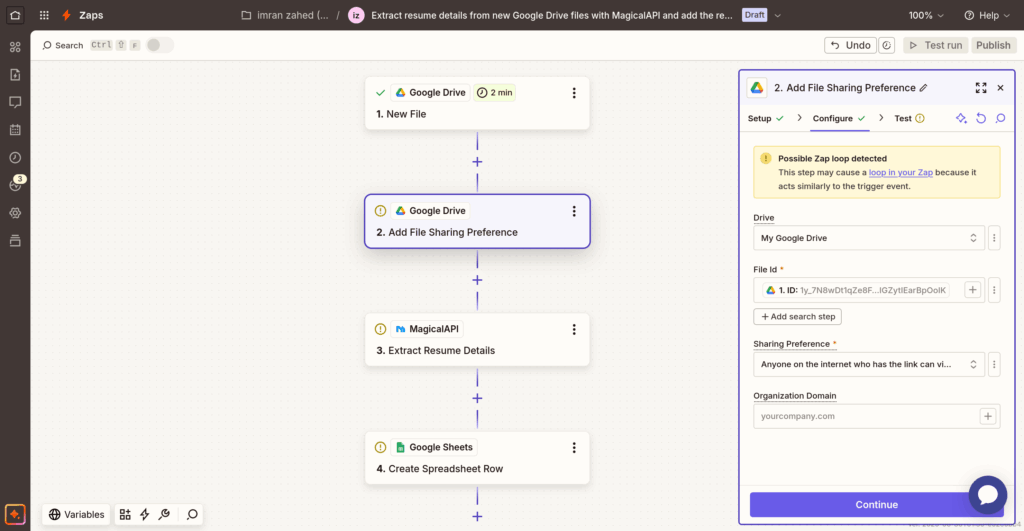
3. In the next step, configure the “Extract Resume Details” action. The only thing you need to configure is the “Account” field; connect your MagicalAPI API Key to Zapier. As you can see in the “Configure” tab, the field values have been predefined.
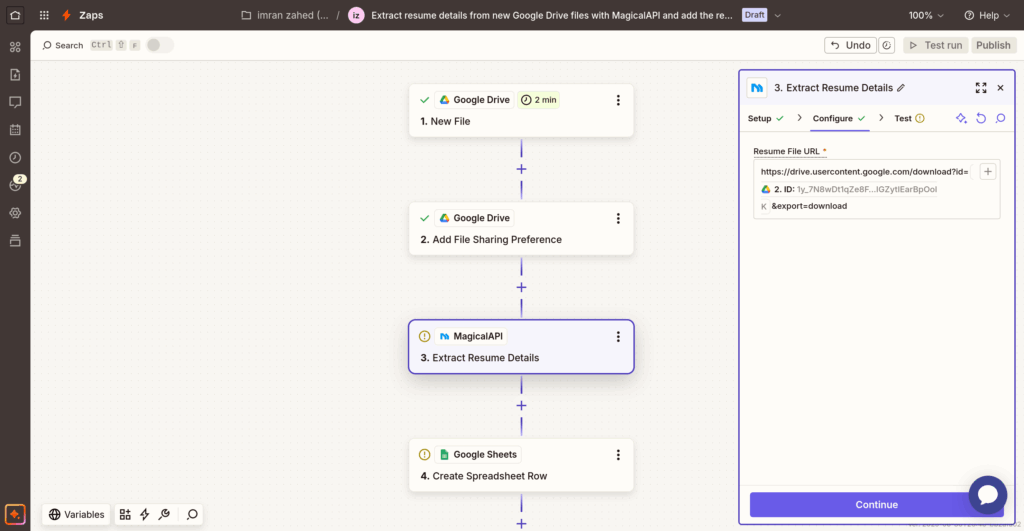
4. In the final action, “Create Spreadsheet Row,” configure how the new data should be added to the output spreadsheet. Just like the trigger, connect your Google Account. Then, in the “Configure” tab, select the Spreadsheet and Worksheet where you want the output data stored.
The Worksheet you select should have column headers to specify which resume data you want to extract. See this worksheet as an example:
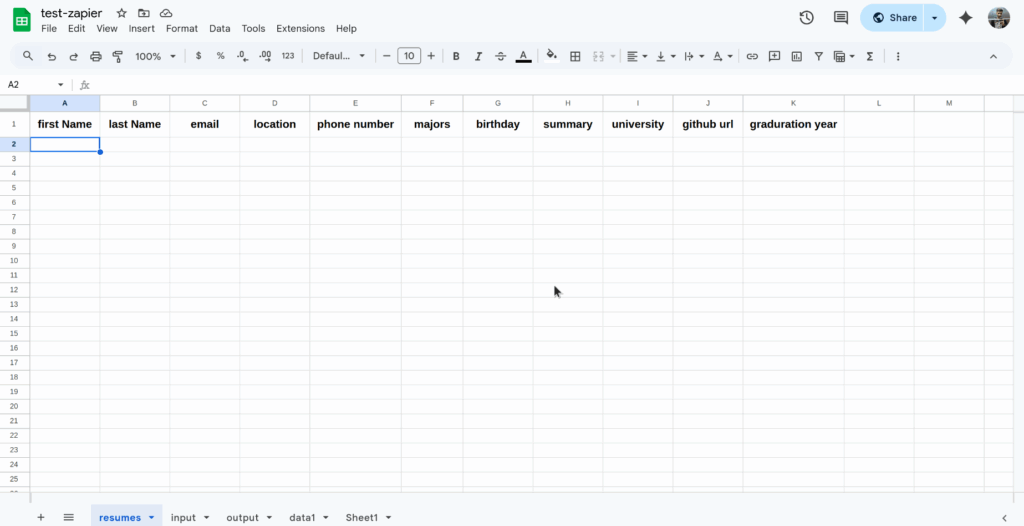
Here’s how the action configuration will look in the Zap editor:
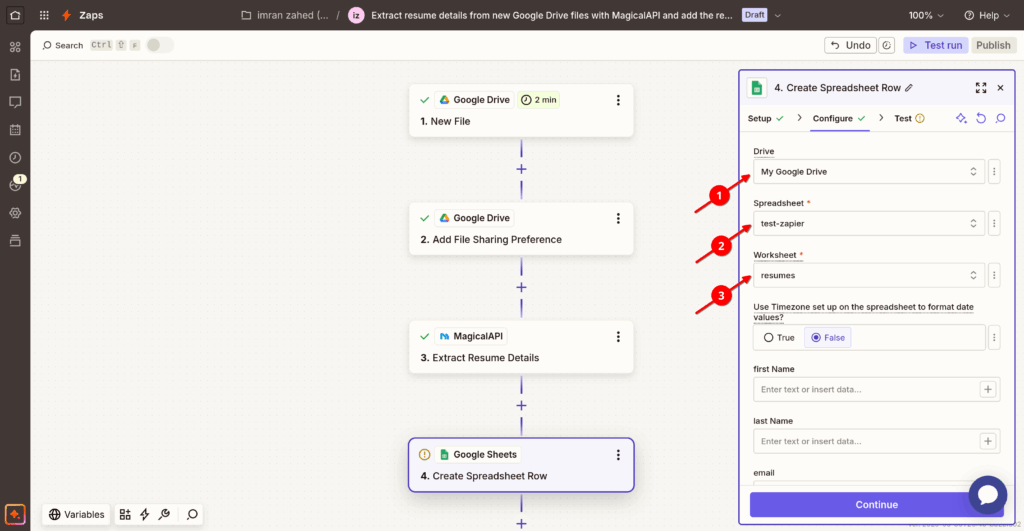
Now, assign the value of each column (defined in the output worksheet) from the output of the MagicalAPI resume parser service, like this:
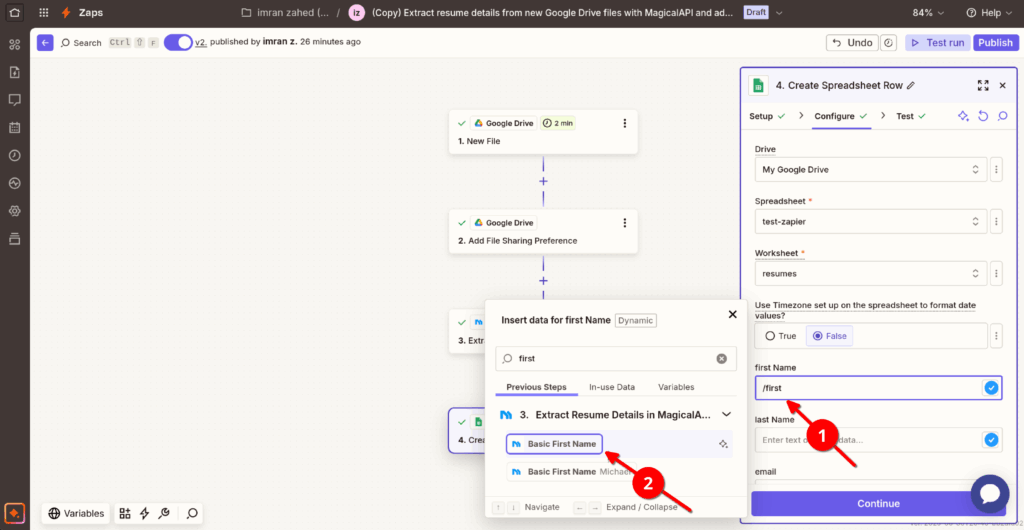
Assign all fields based on the corresponding output parameters in the MagicalAPI resume parser response:

5. It’s complete now, and you can publish your Zap (from the upper-right corner).
Going forward, whenever a new resume file is added (uploaded) to your Google Drive, the details of the resume file will be extracted using the MagicalAPI resume parser service and stored in the output spreadsheet you configured in Google Sheets.
On the left-hand menu of the Zap editor, you’ll find the “Zap runs” tab showing your run history.
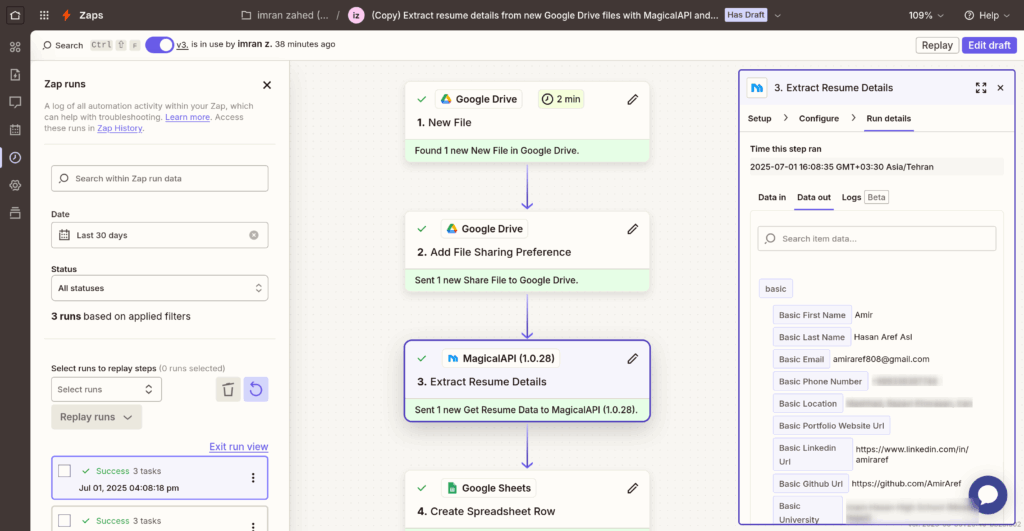
Here’s how the output worksheet looks after adding some files to Google Drive and running the Zaps:
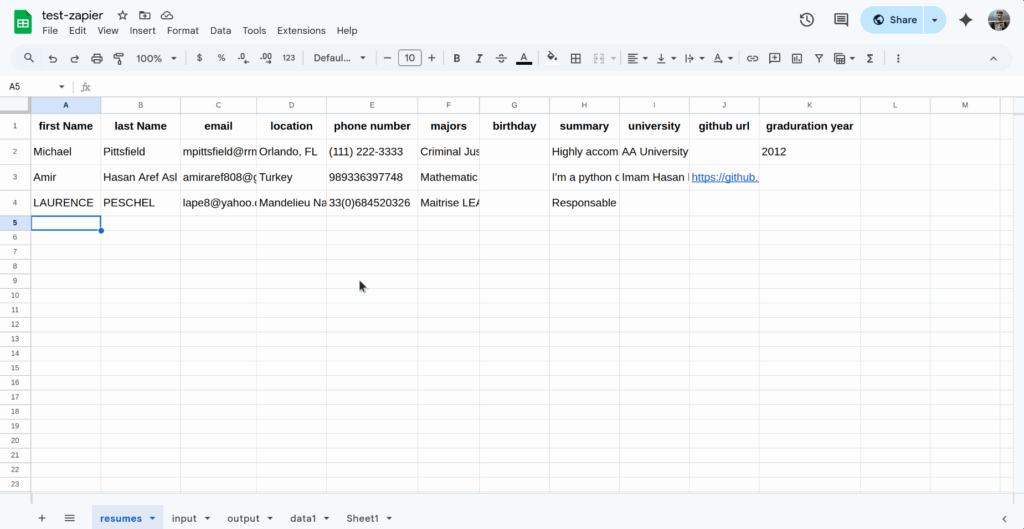
Conclusion: Parse Resumes from Drive with Zapier
Zap templates make it easier to integrate MagicalAPI with Google Drive and Google Sheets(Parse Resumes from Drive with Zapier), enabling the automated extraction of resume file details with little effort. This guide shows how you can streamline resume parsing, making it faster and more efficient. You can reduce manual errors, save valuable time, and maintain the organization and timeliness of your recruitment process by implementing this automation.


